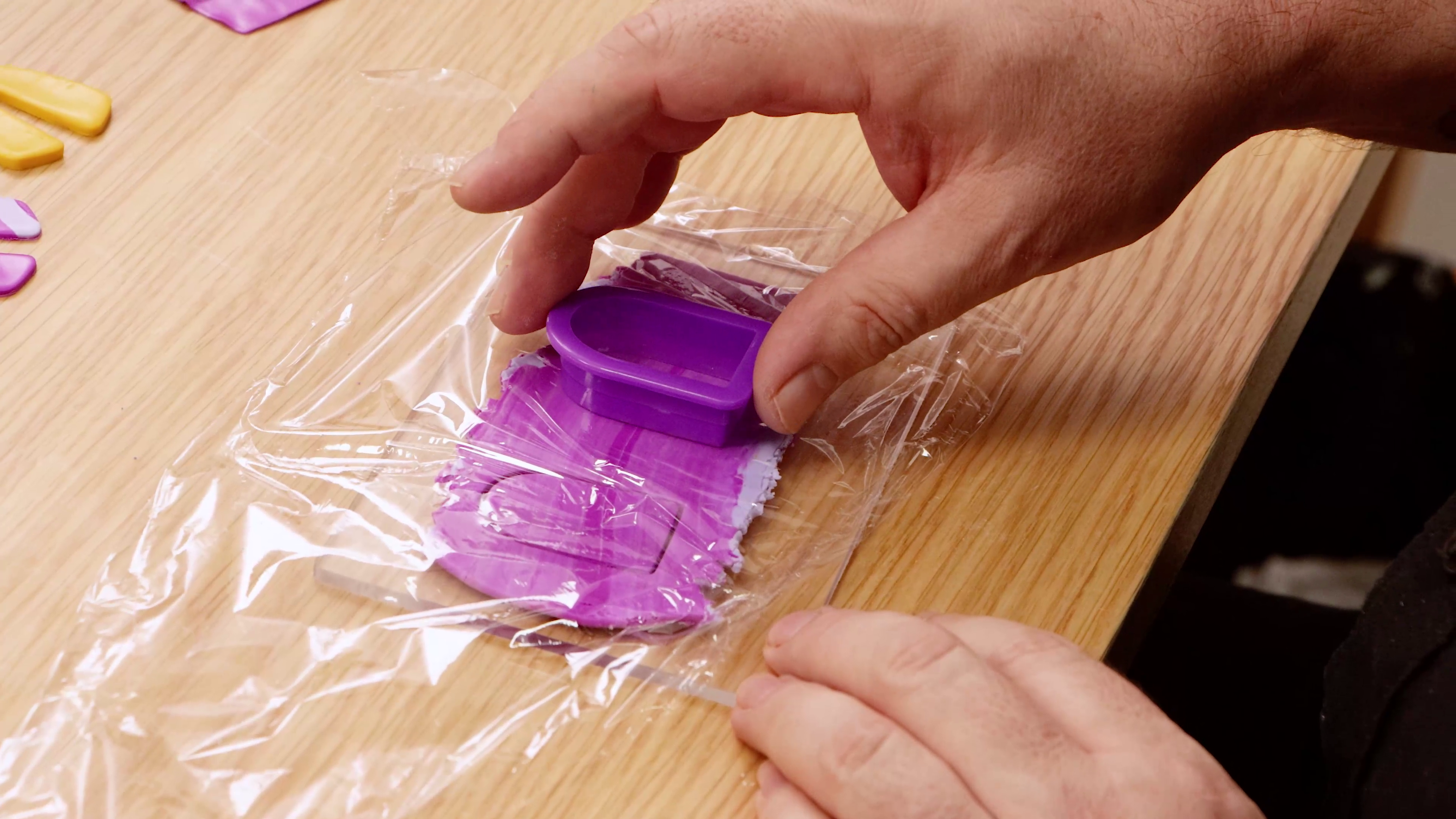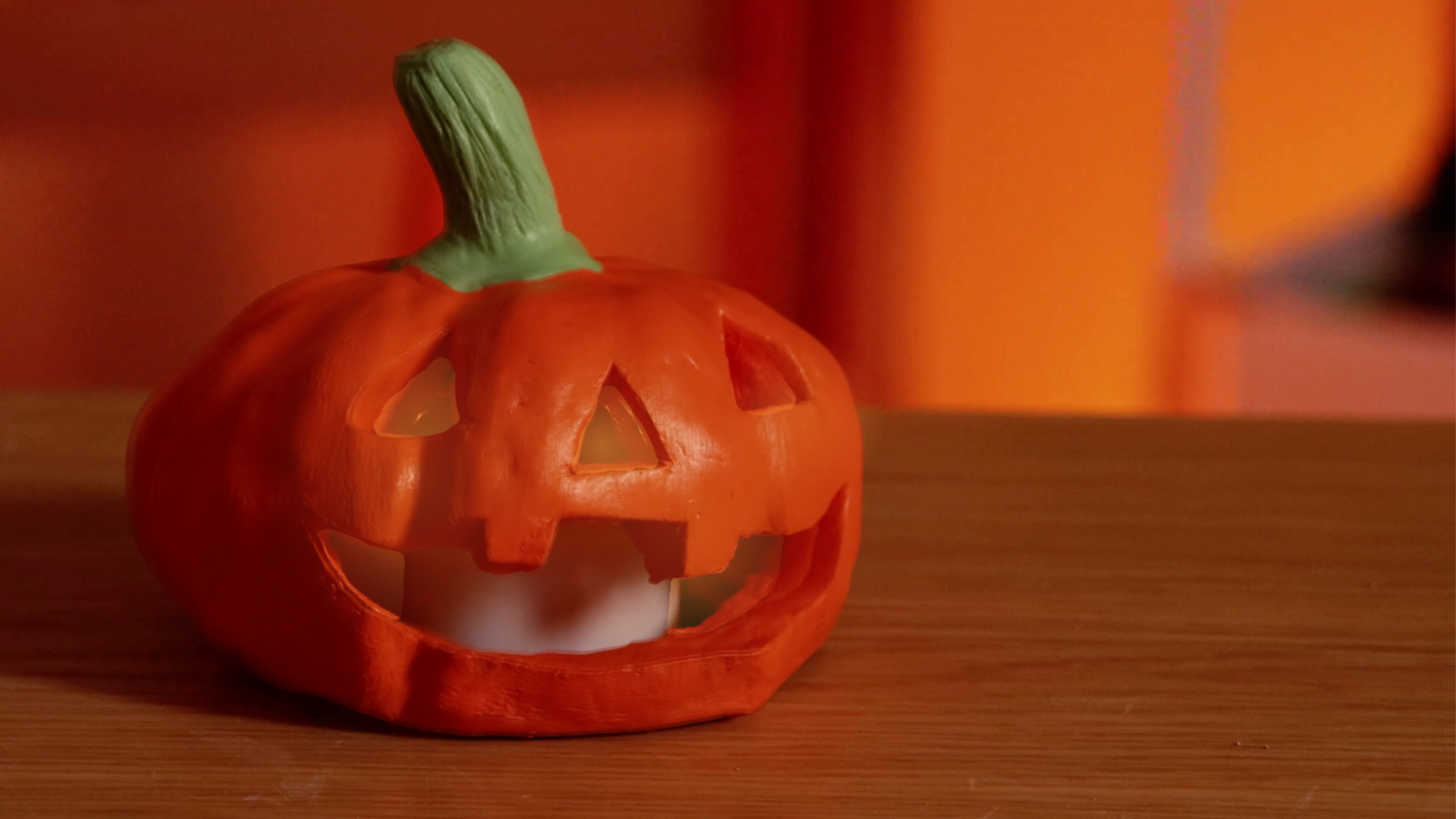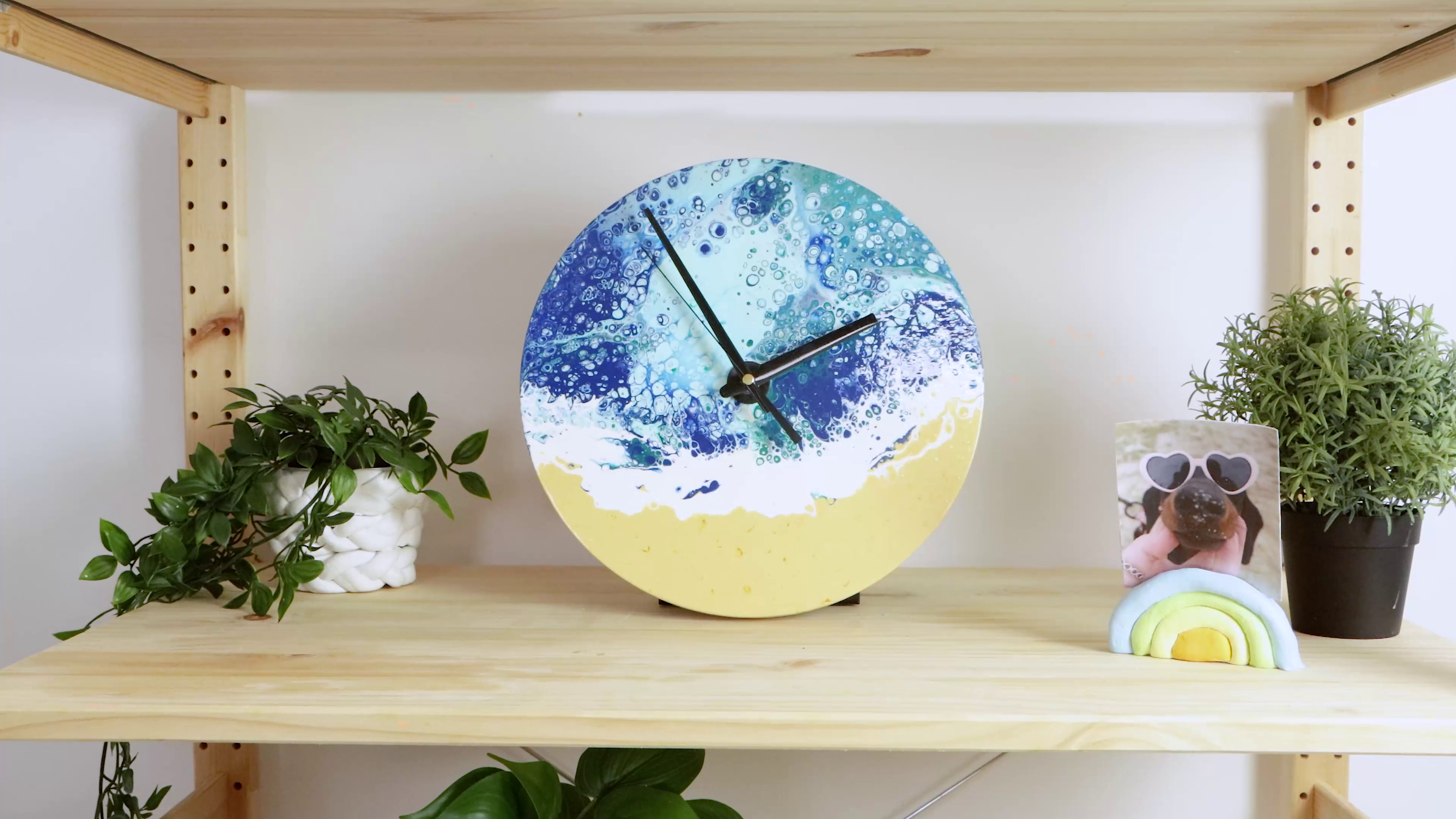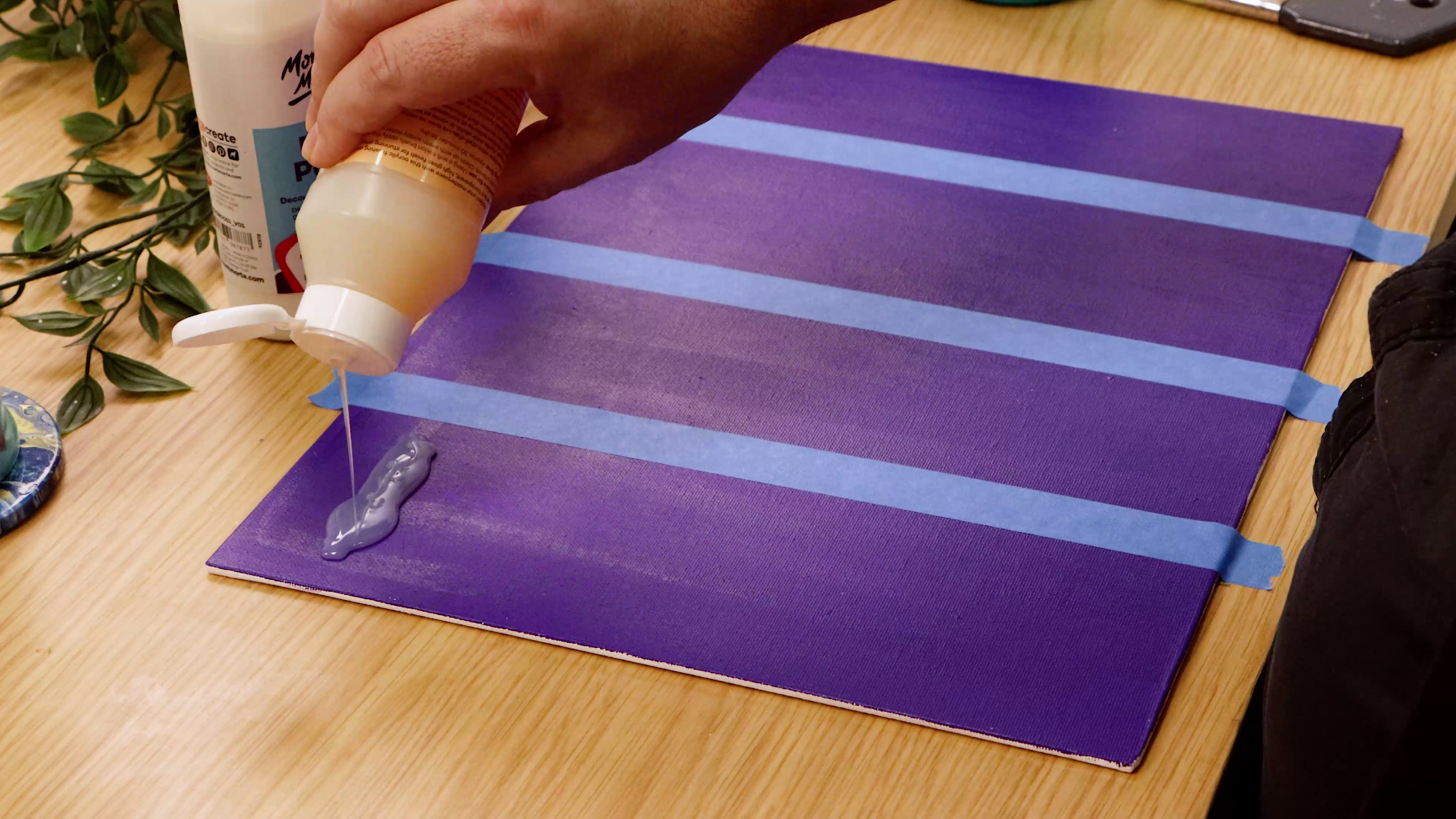How to paint a waterfall
Have a go at painting a waterfall! In this tutorial we show you how to build up texture with modelling paste and bring the scene to life with acrylic paints.
Step 1. Tinting the canvas. The first step is to tint the canvas with a tone created from Mid Green, Paynes Grey and a little Crimson. This colour should be a slate grey with a green tint. Apply the paint with a wide brush. Let this dry.
Step 2. Marking up the outline. Refer to the first image in this PDF and use a Black Mont Marte Brush Marker to mark up the canvas as best as you can. Don’t add any paint or Modelling paste until the drawing is correct.
Step 3. Applying the modelling paste. Use a palette knife to apply modelling paste to the rocks in the foreground. Concentrate the paste around the edge of the rock and fade it out to nothing as you work down the rock. Let this dry overnight.
Step 4. Laying in the dark colours. Squeeze out some Lamp Black onto the palette and paint it into each tree. Remember to vary the position of each tree so the setting looks natural. Lay Black into the bank and into the middle ground. Next lay Black into the shadow areas of the rocks. You might like to refer to the last image in the PDF for guidance.
Step 5. Lay in background around trees. First create a white circle where the sun will lie. Create a mix from Light Green, Mid Green, Cadmium Yellow and Titanium White. Paint this in around the trees and the white circle. Let this dry. Next paint Cadmium Yellow around the circle that suggests the sun and between the trees. Blend it out as you move down the green of the base coat. Use this colour to lay little patches into the green in between the trees. This will suggest the light coming through the foliage. Add more white to the sun area and drag the colour out in rapid strokes emitting from the centre of the sun circle.
Step 6. Laying colour into the trees. Create a colour from Titanium White, Raw Umber with a touch of Mid Green and Burnt Sienna. Paint this tone over the black of the trees. When this tone is applied keep the brush fairly dry so some of the dark tone beneath can be seen. Create a mix with the same colours but add some more Titanium White and Burnt Sienna. Lay this tone into the trees that lie around the hot spot peeking though the trees. At this stage I bring the colour down into the bank and scrub on the colour. Keep a fairly dry brush so the coat of paint is light so a little of the underlying tone can be seen. This is called scumbling. Apply a little green also to suggest a moss on the bank. Next we need to lay in a darker green to suggest foliage. Create this green from Mid Green with a touch of Yellow Ochre and Burnt Sienna. Dab the colour onto the canvas between the trunks. Apply the paint dabs sporadically so that it looks natural. Apply a few of the dabs over the trees as well. Add a little more Cadmium Yellow into the mix and lay this lighter tone in over the leaves for some variation.
Step 7. Laying in the leaf litter. Create a number of brown tones from Burnt Sienna, Raw Umber, Burnt Umber with Titanium White added. Use the small filbert to lay in little dabs of colour to suggest leaf litter. Refer to the finished colour painting for guidance on where to lay the colour.
Step 8. Painting the rocks. The rocks can be created from 4 tones of green laid on top of each other in varying strengths. Create the first tone from Mid Green, a touch of Raw Umber and a touch of Crimson Red. Paint all the rocks with this colour but dry-brush blend it out so the dark shadow at the base of the rock is still slightly visible. Let this first coat dry. Create the second green from Mid Green, Light Green with a touch of Burnt Sienna. Lay this over the previous green, keep a dry brush so that some of the underlying colour can be seen beneath the coat. Create a third green from Light Green, a touch of Mid Green, and Cadmium Yellow. Lay this over the previous coat keeping an even drier brush so the previous coat can be seen. Hold the brush lightly and you will have more control over the amount of paint laid down. Create the fourth and final green from Light Green, Cadmium Yellow and Titanium White. Keep a very, very dry brush and lay this only onto the top side of the rock to suggest the highlight.
Step 9. Adding the water. Squeeze out some Chinese White and Titanium White. Refer to the last image in the PDF of the finished painting. Here you will see the direction in which to take the brush strokes. This is very important as obviously water moves in a specific direction. If the brush strokes do not follow the direction that the water is traveling in the stream then it will not look convincing. For the first layer of water use Chinese White. Start at the top where the water is emerging over the distant rocks. Use a fine round and follow the form of the water direction. Refer to the print out to familiarize yourself with where the paint needs to be more opaque and where the tone needs to be very thin. Chinese White is very translucent so the tint will be seen beneath the white, this will suggest that the water is quite thin in that area. Once the Chinese White is all laid in follow the same process but with Titanium White. Again pay close attention to the finished image. The rule to follow is to lay the Titanium White onto any areas where the water is deeper.
Step 10. Detailing. In this stage we need to go over the painting to define and strengthen any areas of shadow and highlight areas. This is also the stage to have a good look at the composition to see if it requires anything to balance it. In my case I felt there was an area that had too much space so I added a little tree and it looked much better. It is a good practice to turn your painting upside down, step back and have a good look at it.
HINT: It is a good idea to paint up another canvas with the green tint so any mixed colours can be tested before committing to the project canvas. It is better to darken a green with Crimson Red than Black.
Material List
- Brush Wallet Set Premium 15pce
- Colouring Brush Markers Signature 12pc
- Double Thick Canvas Premium 60.9 x 121.8cm (24 x 48in)
- Palette Knife Signature No.10





























